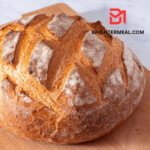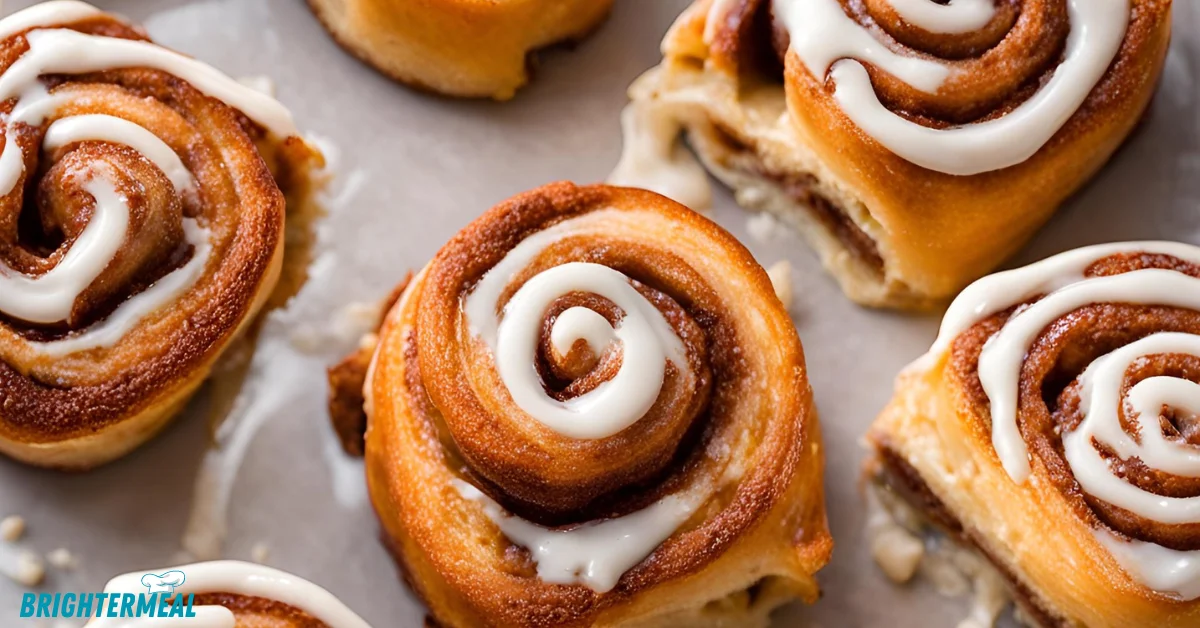Sourdough Artisan Bread
Sourdough artisan bread is a delightful creation that combines the rich flavors of fermentation with the rustic charm of handmade bread. This ancient baking tradition has stood the test of time and continues to captivate bread lovers around the world. In this article, we will delve into the fascinating world of sourdough artisan bread, exploring its history, science, baking techniques, unique characteristics, health benefits, and more. Get ready to embark on a mouthwatering journey through the realm of sourdough!

What is Sourdough Artisan Bread?
Sourdough artisan bread is a type of bread made through a natural fermentation process using a sourdough starter. Unlike commercial yeast, which provides a quick rise, sourdough relies on wild yeasts and lactic acid bacteria present in the starter to leaven the dough slowly. This extended fermentation process not only adds depth of flavor but also results in a bread with a distinctive crust and crumb texture.
The History of Sourdough
The Origins of Sourdough
The roots of sourdough can be traced back thousands of years, with evidence of its existence in ancient civilizations such as Egypt and Mesopotamia. The discovery of sourdough is often attributed to chance, as a mixture of flour and water left out over time would have naturally attracted wild yeasts from the environment, kickstarting the fermentation process.
Sourdough Throughout History
Sourdough became an integral part of daily life in many cultures, particularly during times when commercial yeast was not readily available. It accompanied explorers and settlers on their journeys, sustaining them with its nutritious and long-lasting qualities. Today, sourdough remains an enduring symbol of artisanal baking and culinary heritage.

The Science Behind Sourdough
The Fermentation Process
The magic of sourdough lies in its fermentation process. When flour and water are combined to create a sourdough starter, the mixture becomes a favorable environment for wild yeasts and lactic acid bacteria to thrive. These microorganisms consume the carbohydrates in the dough, producing carbon dioxide and lactic acid as byproducts. The carbon dioxide creates air pockets, causing the dough to rise, while the lactic acid contributes to the characteristic tangy flavor.
Benefits of Fermentation
Apart from flavor development, the fermentation process in sourdough offers several advantages. It breaks down gluten, making it easier to digest for individuals with gluten sensitivities. The presence of beneficial bacteria also enhances the nutritional value of the bread, making it a good source of vitamins and minerals.
Baking Sourdough Artisan Bread
Ingredients and Tools Needed
To embark on your sourdough journey, you will need a few essential ingredients and tools. High-quality flour, water, and salt form the foundation of the dough, while a sturdy mixing bowl, a digital scale, and a Dutch oven or baking stone contribute to the baking process.
The Sourdough Starter
The sourdough starter acts as the engine that powers the fermentation process. It is a combination of flour and water that captures and cultivates wild yeasts and bacteria from the environment. Building and maintaining a healthy starter is crucial to achieving consistent and flavorful results in your sourdough baking endeavors.
Mixing and Kneading the Dough
Creating the dough involves combining the starter with flour, water, and salt. Mixing the ingredients thoroughly and then kneading the dough helps develop gluten and distribute the starter evenly. This process requires time and patience to ensure proper gluten development and to enhance the bread’s structure.

Proofing and Shaping the Loaf
After mixing and kneading, the dough enters the proofing stage, where it undergoes its final rise. This step allows the dough to develop flavor, strength, and structure. Once proofed, the dough is shaped into a loaf, giving it its final form before baking.
Baking and Cooling the Bread
Baking sourdough bread requires high heat to create a crispy crust and a soft, well-baked crumb. Preheating the oven and using steam during the initial stages of baking are key techniques to achieve desirable results. Once baked to perfection, the bread should be allowed to cool completely before slicing, ensuring the flavors and textures have time to settle.
The Unique Characteristics of Sourdough Artisan Bread
Crust and Crumb Texture
Sourdough artisan bread boasts a crust that is often deep golden in color, thick, and crusty. The extended fermentation and higher hydration of the dough contribute to a more robust crust that offers a satisfying crunch when bitten into. The crumb, on the other hand, tends to have an irregular and open structure, with a chewy texture that melts in your mouth.
Flavor Profile
The flavor of sourdough artisan bread is complex and captivating. The fermentation process adds a pleasant tanginess, while the long proofing time allows the development of nuanced flavors, ranging from mildly sweet to subtly nutty or even slightly acidic. Each loaf has its own distinct personality, shaped by the unique combination of ingredients, fermentation conditions, and the baker’s touch.
Shelf Life and Storage
One of the remarkable qualities of sourdough artisan bread is its extended shelf life compared to commercially made bread. The acidity produced during fermentation acts as a natural preservative, allowing sourdough bread to stay fresh for longer periods. Proper storage in a cool, dry place, or even freezing slices for later use, helps maintain its quality and taste.

Health Benefits of Sourdough Artisan Bread
Easier Digestion
Sourdough bread is often well-tolerated by individuals with gluten sensitivities. The fermentation process breaks down the gluten proteins, making them easier to digest. Additionally, the presence of beneficial bacteria in sourdough promotes a healthy gut microbiome, aiding in digestion.
Enhanced Nutritional Value
Compared to commercially produced bread, sourdough artisan bread offers enhanced nutritional value. The fermentation process increases the availability of vitamins and minerals, such as B vitamins, iron, and zinc, making them more easily absorbed by the body.
Blood Sugar Regulation
Sourdough bread has a lower glycemic index compared to bread made with commercial yeast. The slow fermentation and longer proofing time contribute to the breakdown of starches, resulting in a more gradual release of sugars into the bloodstream. This can help regulate blood sugar levels and provide sustained energy.
Tips and Tricks for Baking the Perfect Sourdough Artisan Bread
Maintaining a Healthy Starter
To ensure consistent and flavorful results, it’s essential to maintain a healthy sourdough starter. Regular feeding, proper hydration, and careful temperature control are key factors in cultivating a robust starter that will leaven your bread effectively.
Controlling Fermentation and Rising
The length and temperature of fermentation play a significant role in the final outcome of your sourdough bread. Adjusting the timing and temperature during proofing allows you to experiment with different flavors and textures, ultimately achieving the desired results.
Achieving the Desired Texture
The texture of sourdough bread can vary depending on factors such as hydration, kneading techniques, and shaping methods. Adjusting these variables allows you to customize the texture to your preference, whether you prefer a chewy crumb with large air pockets or a denser, more uniform structure.
Sourdough Variations and Recipe Ideas
Whole Grain Sourdough
For those seeking a heartier and more nutritious option, whole grain sourdough bread is an excellent choice. Incorporating whole wheat, rye, or other grains into the dough adds depth of flavor and additional health benefits.
Flavor Additions and Mix-ins
Sourdough artisan bread provides a canvas for creativity. Experimenting with flavor additions such as herbs, spices, nuts, or dried fruits can elevate your bread to new heights. Mix-ins such as seeds or grains can also add texture and complexity.
Sourdough Bread Recipes
To kick-start your sourdough baking journey, here are a few popular recipes to try: classic country loaf, olive and rosemary sourdough, cinnamon raisin sourdough, and seeded multigrain sourdough. Let your imagination run wild and explore the endless possibilities!
Sourdough Artisan Bread in Popular Culture
Sourdough in Art and Literature
Sourdough bread has transcended the realm of mere sustenance and found its way into art and literature. From still-life paintings capturing rustic loaves to literary works that evoke nostalgia and a sense of community, sourdough bread continues to inspire and captivate creative minds.
Sourdough in Modern Culinary Trends
In recent years, sourdough artisan bread has experienced a resurgence in popularity, with a renewed interest in traditional baking methods and natural fermentation. Artisan bakeries and home bakers alike have embraced the art of sourdough, creating a movement that celebrates craftsmanship, flavor, and sustainability.
Conclusion
Sourdough artisan bread is more than just a delicious loaf. It embodies a rich history, a scientific marvel, and a testament to the artistry of baking. Its unique characteristics, health benefits, and versatility make it a beloved choice for bread enthusiasts around the world. So, next time you savor a slice of tangy, crusty sourdough artisan bread, appreciate the craftsmanship and tradition that brought it to your table.
FAQs
Can I make sourdough bread without a sourdough starter?
No, a sourdough starter is crucial for making sourdough bread. It contains the wild yeasts and bacteria necessary for fermentation, which give sourdough bread its distinct flavor and texture.
How long does it take to make a sourdough starter?
Creating a sourdough starter typically takes around 5 to 7 days. It involves daily feedings of flour and water to cultivate the wild yeasts and bacteria.
Can I use commercial yeast in my sourdough bread?
Using commercial yeast in sourdough bread is not traditional, as it bypasses the slow fermentation process. However, some recipes combine a small amount of commercial yeast with a sourdough starter to speed up the rising time.
Why does my sourdough bread sometimes turn out dense?
Several factors can contribute to dense sourdough bread, such as inadequate gluten development, overproofing, or insufficient hydration. Adjusting these variables and following proper techniques can help achieve a lighter texture.
Can I freeze sourdough bread for later?
Yes, sourdough bread freezes well. To freeze, wrap the bread tightly in plastic wrap or place it in an airtight container. When ready to enjoy, thaw the bread at room temperature or toast it for a crispy crust.

Sourdough Artisan Bread
Ingredients
- 500 g bread flour
- 350 g water room temperature
- 100 g active sourdough starter
- 10 g salt
Instructions
- In a large mixing bowl, combine the bread flour and water. Stir until a shaggy dough forms.
- Add the sourdough starter to the bowl and mix it into the dough until well incorporated.
- Cover the bowl with a clean kitchen towel or plastic wrap and let it rest for 30 minutes. This step, known as autolyse, allows the flour to absorb the water, improving the dough's structure.
- After the autolyse, sprinkle the salt over the dough. Use your hands or a dough scraper to incorporate the salt evenly.
- Begin the bulk fermentation by folding the dough. To fold, grab one side of the dough, stretch it upwards, and fold it over the rest of the dough. Repeat this process from all four sides of the dough, rotating the bowl as you go. This helps develop gluten and distribute the sourdough starter.
- Cover the bowl again and let the dough rest for 30 minutes. Repeat the folding process three more times, at 30-minute intervals.
- After the final fold, cover the bowl and let the dough continue to ferment at room temperature for about 2-3 hours or until it has noticeably risen and feels airy.
- Dust a clean work surface with flour. Carefully transfer the dough onto the floured surface, being mindful not to deflate it too much.
- Gently shape the dough into a round or oval shape by folding the edges towards the center, creating tension on the surface. You can use a bench scraper or your hands to help with the shaping process.
- Place the shaped dough onto a floured proofing basket or a lined bowl, seam side up. Cover it with a kitchen towel and let it undergo the final proofing, also known as the second rise. This typically takes 2-4 hours, depending on the room temperature.
- About 30 minutes before the end of the final proofing, preheat your oven to 450°F (230°C). Place a Dutch oven or a baking stone inside the oven while preheating to ensure it gets hot.
- Carefully remove the preheated Dutch oven or baking stone from the oven. If using a Dutch oven, place the dough inside, seam side down. If using a baking stone, transfer the dough onto a piece of parchment paper and place it on the stone.
- Score the top of the dough with a sharp knife or a bread lame to allow for controlled expansion during baking.
- Cover the Dutch oven with its lid or create a steam environment by spraying a little water inside the oven before closing the door.
- Bake the bread covered for 20 minutes. Then, remove the lid or uncover the bread to allow the crust to brown. Continue baking for an additional 20-25 minutes or until the bread is golden brown and sounds hollow when tapped on the bottom.
- Once baked, remove the bread from the Dutch oven or baking stone and let it cool on a wire rack for at least 1 hour before slicing.
- Enjoy your freshly baked sourdough artisan bread!
Nutrition
By following these notes, you’ll be well on your way to creating a delightful and authentic sourdough artisan bread.
Also you can try this bread recipe: Cheesy Garlic Breadsticks







One Comment